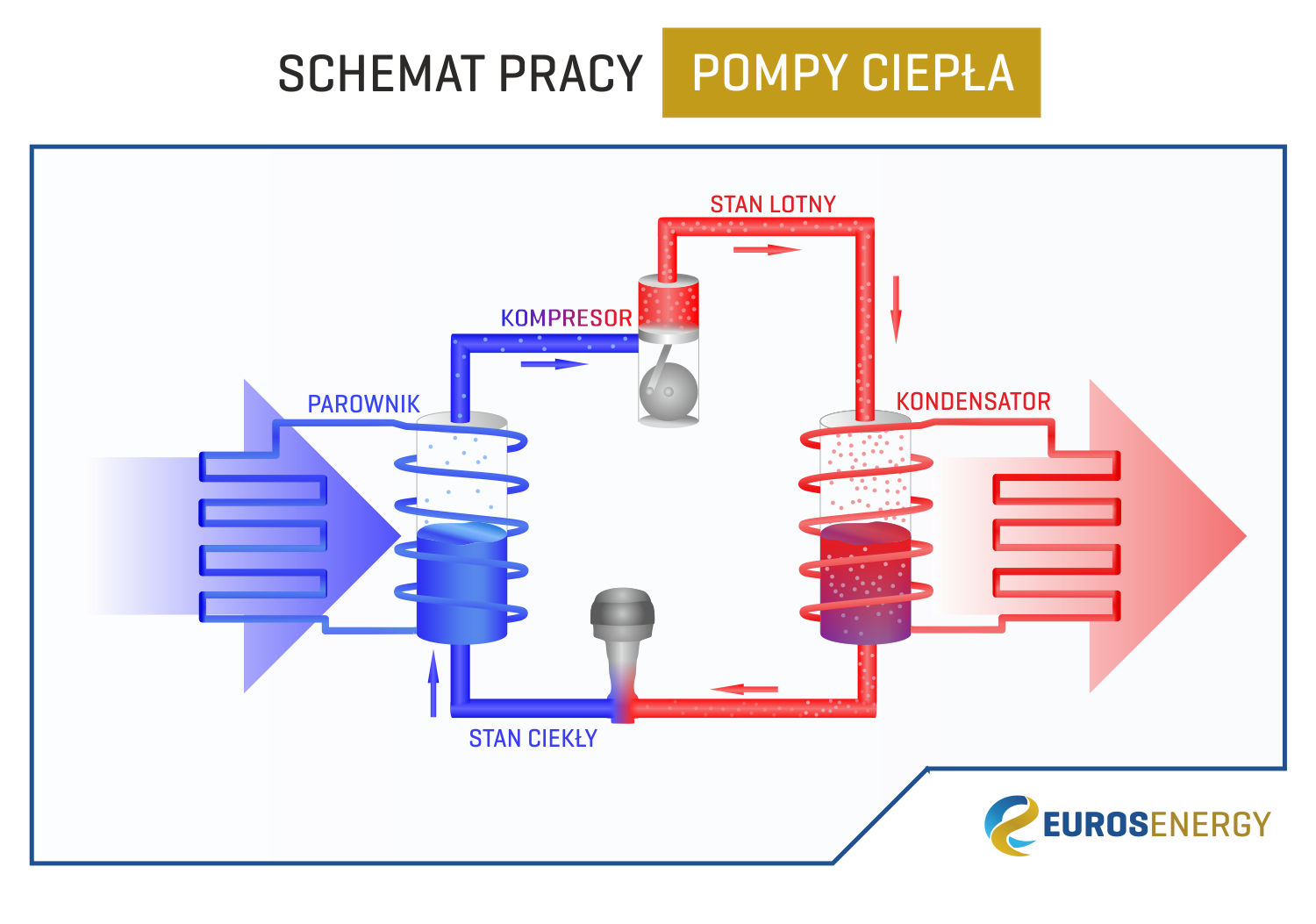Heat pumps are at the core of the technology – heating devices fundamentally different from those based on combustion processes. In the case of combustion processes, heat is generated by the release of energy from chemical bonds in the fuel. The efficiency of the energy conversion process cannot be greater than 100% due to the principle of energy conservation. However, in the case of heat pumps, we are not dealing with energy conversion, but with its transfer from one medium to another – more precisely, from a medium at a lower temperature (called the lower heat source) to a medium at a higher temperature (called the upper heat source). The most common lower heat sources are air or soil, while the upper heat source is a heating system.
Heat is transferred by a working fluid, which absorbs heat from the lower heat source and transfers it to the upper heat source, thus performing the thermodynamic cycle called the Linde cycle. The working fluid evaporates when it absorbs heat, and condenses when it releases heat. This means that the evaporation temperature of the working fluid is lower than its condensation temperature. In order for this to be physically possible, the working fluid vapor must be compressed after absorbing heat from the lower heat source and before delivering it to the upper heat source. Compressing the fluid causes an increase in its pressure, and the higher the pressure of the fluid, the higher the temperature at the transition between the liquid and gas states (called the condensation/evaporation temperature).
The working fluid is usually compressed by an electric compressor. The sum of the electrical energy consumed by the compressor (and thus supplied to the fluid) and the heat absorbed by the fluid from the lower heat source make up the heat delivered to the upper heat source. These three values allow us to determine the efficiency of the heat pump. However, because we are not dealing with energy conversion in a heat pump, but with energy transfer, we do not talk about the efficiency of the pump, but about the coefficient of performance (COP). Both efficiency and COP define the ratio of the obtained effect to the input energy expenditure. In the case of a heat pump, the obtained effect is the heat delivered to the upper heat source (heating system), while the input energy expenditure is the electrical energy powering the compressor. Because the heat delivered to the upper heat source is equal to the sum of the heat absorbed from the lower heat source and the electrical energy consumed by the compressor, the quotient of the heat delivered to the upper heat source by the electrical energy consumed by the compressor will always be greater than 1. In reality, COP values range from 2 to 6.

In the developed technology of the Heat Plant of the Future, efficient, reversible heat pumps are integrated with three lower heat sources: air heat exchangers, low-temperature ground storage, and high-temperature water storage. The system is powered by electricity produced directly on-site from hybrid PVT solar collectors and a nearby photovoltaic installation. During winter nights, the system is supported by electric energy supplied from the National Power Grid, including electric energy purchased with a guarantee of origin from renewable energy sources under Power Purchase Agreements (PPAs).
Thanks to the applied emission-free heat storage from summer to winter, a total SCOP coefficient value of 3.5 was achieved for the heat pump system. The SCOP value at this level guarantees that a minimum of 70% of the heat comes from renewable sources, even if all the electric energy was produced from coal. In reality, most of the required electric energy is generated locally from PV and PVT modules.
